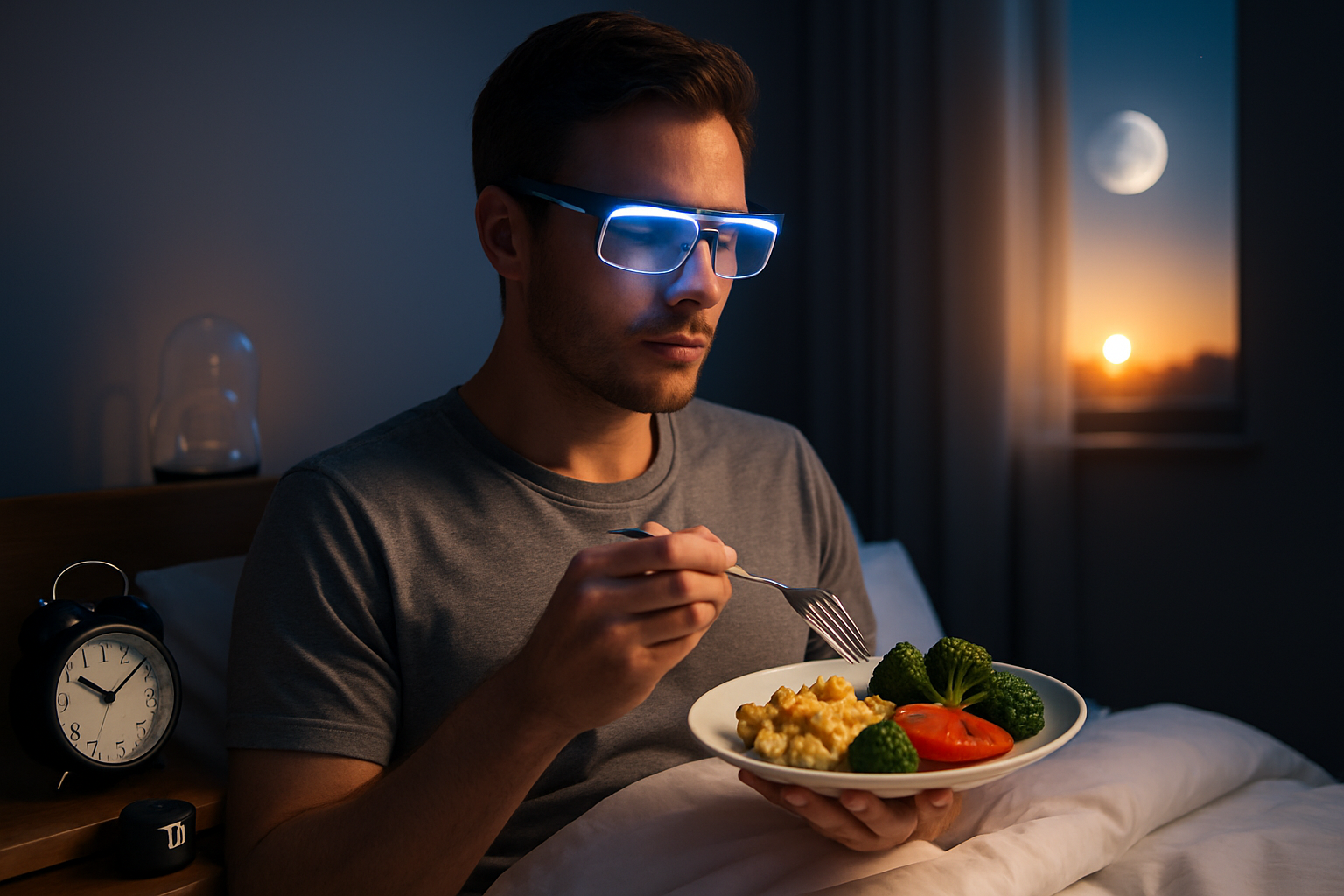Biohacking Sleep: Optimizing Your Circadian Rhythm for Peak Performance
Are you tired of feeling tired? Imagine waking up each morning feeling refreshed, energized, and ready to conquer the day. What if you could unlock the secrets of your body's internal clock to achieve optimal sleep and enhance your overall well-being? Welcome to the fascinating world of circadian rhythm biohacking.

The Science of Circadian Rhythms
Our bodies operate on a 24-hour cycle known as the circadian rhythm. This internal clock regulates various physiological processes, including sleep-wake cycles, hormone production, and metabolism. The suprachiasmatic nucleus (SCN), located in the hypothalamus, acts as the master timekeeper, synchronizing our body’s functions with environmental cues, particularly light exposure.
Research has shown that disruptions to our circadian rhythm can lead to a host of health issues, including sleep disorders, metabolic imbalances, and even increased risk of chronic diseases. By understanding and optimizing our circadian rhythms, we can potentially mitigate these risks and enhance our overall well-being.
The Rise of Circadian Biohacking
Circadian biohacking involves intentionally manipulating environmental factors and lifestyle habits to align our internal clocks with natural light-dark cycles. This practice has gained traction in recent years, with proponents reporting improved sleep quality, increased daytime energy, and enhanced cognitive function.
The concept draws from both ancestral wisdom and cutting-edge chronobiology research. Our ancestors lived in harmony with natural light cycles, and modern science is now validating the importance of this synchronization for optimal health. Circadian biohacking aims to recapture this natural alignment in our technology-driven world.
Key Strategies for Circadian Optimization
Light Exposure Management
Light is the most potent zeitgeber (time-giver) for our circadian system. Strategically timed light exposure can help reset and strengthen our internal clocks. Experts recommend getting at least 30 minutes of bright light exposure within the first hour of waking to signal the start of the day to our bodies.
Conversely, minimizing blue light exposure in the evening is crucial. Blue light from electronic devices can suppress melatonin production, disrupting our sleep-wake cycle. Using blue light blocking glasses or apps that filter blue light can help maintain healthy melatonin levels as bedtime approaches.
Temperature Regulation
Body temperature fluctuations play a significant role in our circadian rhythms. Our core temperature naturally drops as we prepare for sleep and rises as we wake. Biohackers are exploring ways to manipulate this process, such as taking warm baths before bed to induce a subsequent temperature drop, signaling the body it’s time to sleep.
Some advanced practitioners are even experimenting with temperature-controlled mattress pads to optimize their sleep environment throughout the night, mimicking the natural temperature fluctuations our bodies expect.
Meal Timing
Emerging research suggests that when we eat can be just as important as what we eat when it comes to circadian health. Time-restricted feeding, a form of intermittent fasting that aligns eating windows with our circadian rhythms, has shown promising results in improving metabolic health and sleep quality.
Circadian biohackers often recommend consuming the majority of calories earlier in the day and avoiding late-night eating to support optimal circadian function. This approach aligns with our body’s natural rhythms of insulin sensitivity and digestive enzyme production.
Advanced Circadian Biohacking Techniques
Chronotherapy
Chronotherapy involves timing the administration of medications and treatments to align with our body’s natural rhythms. This approach can potentially enhance the efficacy of treatments while minimizing side effects. For example, some cancer treatments have shown improved outcomes when timed according to the patient’s circadian rhythm.
Wearable Technology
The advent of smart wearables has opened new possibilities for personalized circadian optimization. Devices that track sleep patterns, light exposure, and activity levels can provide valuable insights into an individual’s circadian profile. Some advanced wearables even offer real-time recommendations for light exposure and activity based on the user’s circadian phase.
Genetic Chronotyping
Emerging research in chronogenetics is uncovering how our genes influence our individual circadian preferences, or chronotypes. Genetic testing can reveal whether someone is naturally inclined to be a “morning lark” or a “night owl,” allowing for more personalized circadian optimization strategies.
Circadian Wisdom: Practical Tips for Everyday Life
-
Maintain a consistent sleep-wake schedule, even on weekends
-
Create a dark, cool sleeping environment
-
Avoid caffeine after 2 PM
-
Practice a relaxing bedtime routine to signal sleep to your body
-
Expose yourself to natural daylight within an hour of waking
-
Consider using a sunrise alarm clock for gentle wake-ups
-
Eat your largest meal earlier in the day
-
Engage in regular physical activity, but avoid intense exercise close to bedtime
As we continue to unravel the complexities of our internal clocks, circadian rhythm optimization stands at the forefront of personalized health and wellness. By aligning our lifestyles with our natural biological rhythms, we can unlock new levels of vitality, productivity, and overall well-being. The journey to optimal circadian health is deeply personal, requiring experimentation and self-awareness. As you embark on your own circadian biohacking adventure, remember that small, consistent changes can lead to profound improvements in your quality of life. Listen to your body, stay curious, and embrace the power of your internal clock to live in harmony with nature’s rhythms.





